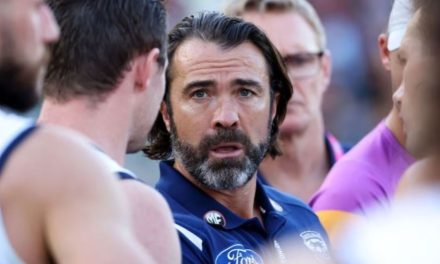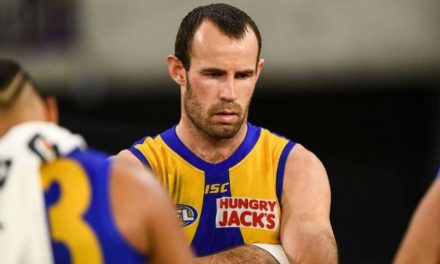The AFL year ended with a bang, but it shouldn’t overshadow the fact the game does have some issues. Photo: AFL MEDIA
There’s been a couple of occasions in recent years when even the most enthusiastic fan of AFL football had to concede in a review of the year that the sizzle had overshadowed the quality of the actual sausage.
And for the majority of the season, 2018 by any measure was headed the same way. Fortunately, the best was saved for last, courtesy of an unforgettable grand final.
West Coast’s five-point win over Collingwood, sealed by Dom Sheed’s ice-cool match-winning goal with barely 90 seconds left on the clock, was a flag decider for the ages, a game which will remain the abiding memory of the football year.
Whether or not it leads to a collective bout of amnesia come 2019 will be worth watching. Because there were long periods in the year just ended during which the game, not for the first time in the modern era, seemed in a bit of bother.
Throughout, the longest-running storyline wasn’t speculation about a club, coach or player, but about the quality of the football code in which they were participating, the angst among the AFL’s hierarchy about where the game was going great enough to have us heading into next year with some of the most fundamental changes to the rules we’ve seen in a long time.
The introduction of set starting positions (six players midfield and six in either 50-metre arc) even for centre bounces is more than just a tinkering with the rules.
That and the change in procedure for a kick-in from a behind (players no longer required to kick to themselves to play on and opponents standing the mark moved back 10 metres) are major alterations, probably the most significant we’ve seen since the introduction of out-of-bounds on-the-full and the centre diamond (later square).
I’ve got my doubts about how much difference either of those moves, plus seven other less dramatic changes to the rules, will have on the sort of football we’re currently seeing. But I don’t dispute the need for at least some sort of action.
That’s because AFL’s on-going evolution appears to have stalled, and for some time now. Two issues refuse to go away, and they are congestion around the ball, and a continued decline in scoring.
In 2018, the average number of contested possessions was the highest ever recorded. Tackle averages remained at 65, the 10th year in a row they’d been in the 60s and more than double what they were at the turn of the century.
There’s been marginally fewer throw ins and ball ups over the last three seasons after previous rule tweaks, but that has made little difference to the numbers mentioned above. Nor has a reduction in interchange from an average 133 rotations per team in 2013 to the current cap of 90 per side.
The most disturbing trend of all remains in scoring. It had reached a low ebb indeed mid-season when the debate about rule changes reached its peak and supporter unrest about the quality of football they were watching was at its most vocal.
Things seemed to pick up in the second half of the season, and there was a new wave of optimism come a terrific round 20, in which not only eight teams posted tallies of more than 100 points, but five games were decided by four points or less.
But even after all that, we finished the season with an average points tally of just 83 per team per game, the lowest for exactly 50 years. And perhaps not coincidentally, 1968 was the season which spawned the introduction of out-of-bounds on-the-full, a measure which immediately sent scoring on an upward curve.
The starting positions at centre bounces may have at least some impact. Just how much is questionable. Players will be spread for only a few seconds whilst each bounce occurs. If you had (on current scoring), say, 30 per game, that’s still only at best a couple of minutes in total in games which last 120.
A far better tack in my view would have been to have umpires call a stop to play and a ball-up long before the packs milling around the ball we’ve become so used to seeing even eventuated.
But when the most fundamental measure of the game (the scoreboard) has regressed to a 50-year low point in an era when every other indicator like skills, fitness and professionalism have continued to march ahead, that’s evidence enough for me that it’s time to try something other than blind hope that things will change.
We’re never going to return to the days of multiple 100-plus goalkickers. Indeed, there’s a reasonable chance we may never see one again. But we can at least attempt to restore a degree of what has traditionally been one of the best aspects of our game.
Personally, that’s what I’m hoping for in AFL football’s new year. If we continued to get grand finals as good as the last, that would be great. But that was just one of 207 games played. If we got a larger slice of them in 2019 featuring more open play, more high marking and some bigger bags of goals, that would be much better.
*This article first appeared at SPORTING NEWS











